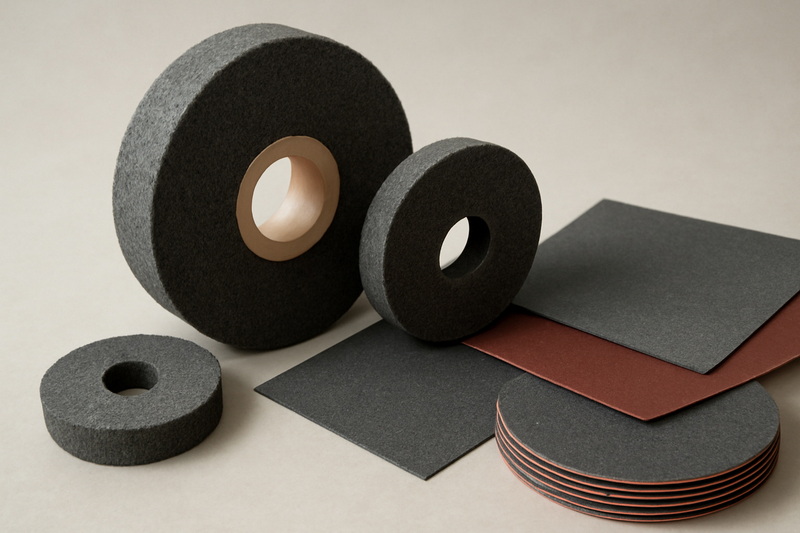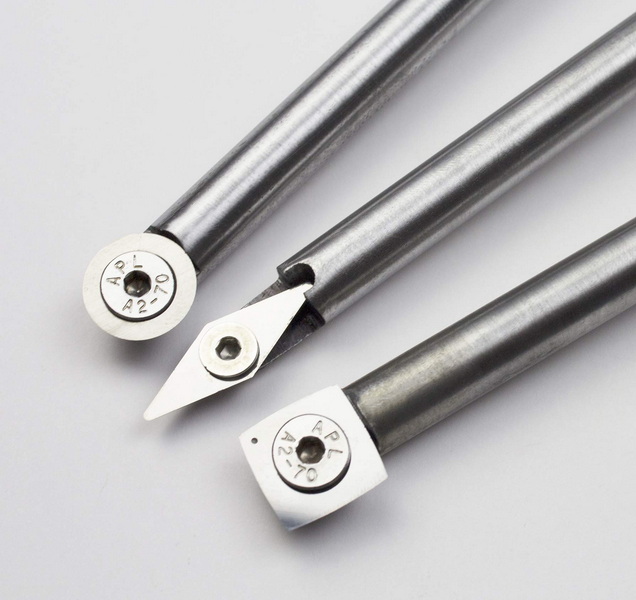Content Menu
● Introduction to Silicon Carbide Powder
● Key Properties and Types of Silicon Carbide Powder
>> Types of Silicon Carbide Powder
● Major Industries Using Silicon Carbide Powder
>> Abrasives and Machining
>> Refractory Materials
>> Advanced Ceramics and Composites
>> Electronics and Semiconductors
>> Renewable Energy and Photovoltaics
>> Automotive and Aerospace
>> Metallurgy and Metal Processing
>> Chemical Industry Applications
>> Emerging and Niche Applications
● Silicon Carbide Powder Production Process
● Visual Guide: Silicon Carbide in Industry
● Future Trends and Innovations in Silicon Carbide Applications
>> Electrification and Energy Efficiency
>> Miniaturization and Integration in Electronics
>> Advanced Manufacturing and 3D Printing
>> Environmental Sustainability
>> Expansion into New Markets
● Conclusion
● FAQ: Top 5 Questions About Silicon Carbide Powder
>> 1. What makes silicon carbide powder ideal for abrasive applications?
>> 2. How does silicon carbide powder contribute to high-temperature industrial processes?
>> 3. Why is silicon carbide powder important in semiconductor manufacturing?
>> 4. Can silicon carbide powder be used in 3D printing?
>> 5. What environmental considerations are associated with silicon carbide powder production?
Silicon carbide powder, renowned for its remarkable hardness, thermal conductivity, and chemical stability, has become a cornerstone material for a wide spectrum of modern industries. From the relentless demands of heavy manufacturing to the precision of semiconductor fabrication, silicon carbide powder production underpins countless technological advancements. This article delves into the industries that rely most heavily on silicon carbide powder, exploring the unique properties that make it indispensable, the production process, and the future outlook for this high-performance material.

Introduction to Silicon Carbide Powder
Silicon carbide (SiC) is a crystalline compound of silicon and carbon. It is produced primarily through high-temperature reactions in electric furnaces, resulting in a material with exceptional mechanical and thermal properties. Silicon carbide powder is the finely milled form of this compound, tailored for use in a variety of industrial applications that demand hardness, durability, and resistance to extreme environments.
Key Properties and Types of Silicon Carbide Powder
Silicon carbide powder stands out due to several unique properties:
- Extreme Hardness: SiC ranks 9.2–9.3 on the Mohs scale, making it one of the hardest known materials.
- High Thermal Conductivity: Efficient heat dissipation, crucial for electronics and high-temperature processes.
- Chemical Stability: Resistance to oxidation and corrosion, even at elevated temperatures.
- Low Thermal Expansion: Maintains dimensional stability under thermal cycling.
- Electrical Conductivity: Depending on purity and structure, SiC can be either a semiconductor or a conductor, which is valuable in electronics and heating elements.
Types of Silicon Carbide Powder
- Black Silicon Carbide: Contains some impurities, ideal for abrasives and less demanding industrial uses.
- Green Silicon Carbide: Higher purity, used in precision applications such as semiconductors and advanced ceramics.
- Ultrafine and Nano Silicon Carbide: Used in high-performance coatings, advanced composites, and research applications for their enhanced surface area and reactivity.
Major Industries Using Silicon Carbide Powder
Abrasives and Machining
Silicon carbide powder's hardness and sharpness make it a premier choice for abrasive applications. It is widely used in:
- Grinding wheels, cutting discs, and sandpapers
- Water-jet cutting and sandblasting media
- Lapping and polishing of metals, ceramics, and glass
The automotive, metalworking, and construction industries rely on SiC abrasives for efficient shaping, cutting, and finishing of hard materials. SiC abrasives are also favored for their ability to maintain sharp edges and resist wear, reducing the frequency of tool replacement and increasing productivity.
Refractory Materials
The steel, glass, and ceramics sectors use silicon carbide powder in refractory products due to its ability to withstand extreme heat and corrosive environments. Applications include:
- Furnace linings and kiln shelves
- Crucibles and heat exchangers
- Burner nozzles and wear-resistant tiles
SiC's thermal stability and resistance to slag and chemical attack extend the service life of refractory components, improving process efficiency. In the steel industry, SiC refractories are critical for maintaining purity and reducing contamination during metal production.
Advanced Ceramics and Composites
Silicon carbide powder is essential in the production of advanced ceramic and composite materials, providing:
- Armor and ballistic protection for military and security applications
- Sliding bearings, seal rings, and wear parts for pumps and industrial equipment
- Lightweight, high-strength components for aerospace and automotive sectors
These ceramics leverage SiC's mechanical strength, low density, and thermal shock resistance. In defense, SiC ceramics are used in personal and vehicle armor, offering superior protection at a fraction of the weight of traditional materials.
Electronics and Semiconductors
The electronics industry is one of the fastest-growing consumers of silicon carbide powder, particularly for:
- Power semiconductor devices (MOSFETs, diodes, IGBTs)
- Wafer substrates for high-frequency and high-voltage applications
- LED and optoelectronic device manufacturing
SiC-based devices offer superior efficiency, higher breakdown voltages, and better thermal management compared to traditional silicon, enabling advancements in electric vehicles, renewable energy systems, and 5G communications. The use of SiC in power electronics is revolutionizing energy conversion, reducing losses, and enabling smaller, lighter, and more efficient devices.
Renewable Energy and Photovoltaics
Silicon carbide powder plays a pivotal role in the renewable energy sector, notably in:
- Slicing silicon ingots into wafers for photovoltaic cells using SiC abrasives
- High-efficiency substrates for solar cells and lithium battery anodes
Its use enhances material efficiency, reduces waste, and supports the global shift toward sustainable energy production. SiC-based inverters and power modules are essential for managing energy flow in wind and solar power installations, increasing reliability and reducing maintenance costs.
Automotive and Aerospace
In automotive and aerospace engineering, silicon carbide powder enables:
- Production of lightweight, durable brake discs and clutches
- High-performance engine components and heat exchangers
- Protective coatings for turbine blades and rocket nozzles
SiC's combination of strength, heat resistance, and low weight is critical for improving fuel efficiency and reliability in demanding environments. In electric vehicles, SiC-based power electronics allow for faster charging, longer range, and improved overall performance.
Metallurgy and Metal Processing
Silicon carbide powder is extensively used in the metallurgical industry for:
- Deoxidizing steel and refining alloys
- Enhancing the quality of cast iron and steel products
- Acting as a source of silicon and carbon in foundry applications
SiC's chemical stability and high melting point make it an effective additive in metal processing, improving mechanical properties and reducing impurities in finished products.
Chemical Industry Applications
The chemical industry benefits from silicon carbide powder in several ways:
- Catalyst supports for chemical reactions due to high surface area and inertness
- Construction of corrosion-resistant pipes, valves, and vessels for handling aggressive chemicals
- Filtration membranes for purifying gases and liquids in harsh environments
SiC's resistance to chemical attack extends the lifespan of equipment and reduces maintenance costs in chemical plants.
Emerging and Niche Applications
The versatility of silicon carbide powder is driving innovation in areas such as:
- Additive manufacturing and 3D printing of ceramics and composites
- Energy storage and battery technologies
- Environmental filtration and catalyst supports
- Radiation shielding and advanced coatings for space exploration
- Biomedical implants and dental prosthetics due to biocompatibility and wear resistance
These emerging uses continue to expand the reach of silicon carbide powder across high-tech industries, opening new possibilities for advanced manufacturing and sustainable technologies.

Silicon Carbide Powder Production Process
The production of silicon carbide powder is a complex, multi-stage process that ensures high purity and consistent quality for industrial applications. The primary steps include:
1. Raw Material Selection: High-purity silica sand and carbon sources (such as petroleum coke) are carefully chosen to minimize impurities.
2. Carbothermic Reduction: The mixture is heated above 2000°C in an electric arc furnace, where silicon dioxide reacts with carbon to form silicon carbide and carbon monoxide.
3. Crushing and Grinding: The resulting SiC “boule” is cooled and mechanically reduced to powder, with particle size tailored for specific applications.
4. Purification: Chemical and physical processes remove residual impurities, especially for high-tech uses like semiconductors.
5. Quality Assurance: Advanced testing (e.g., X-ray diffraction, electron microscopy) verifies composition, particle size, and purity.
6. Packaging: Moisture-proof, anti-static packaging preserves powder integrity during storage and transport.
This rigorous process ensures that silicon carbide powder meets the stringent requirements of industries ranging from heavy manufacturing to microelectronics.
Visual Guide: Silicon Carbide in Industry
Below are visual representations of silicon carbide powder and its applications across industries:
- Abrasive wheels and sandpapers: Showcasing SiC's role in machining and finishing.
- Refractory linings in furnaces: Highlighting SiC's heat resistance.
- Semiconductor wafers: Demonstrating SiC's use in electronics.
- Solar panels: Illustrating SiC's role in renewable energy.
- Automotive brake discs: Featuring SiC's application in lightweight, high-performance components.
- Chemical processing equipment: Depicting corrosion-resistant SiC parts.
- 3D-printed SiC ceramics: Showcasing innovation in additive manufacturing.
Future Trends and Innovations in Silicon Carbide Applications
As global industries continue to evolve, the demand for silicon carbide powder is expected to rise, driven by several key trends:
Electrification and Energy Efficiency
With the rapid adoption of electric vehicles and renewable energy systems, SiC-based power electronics are becoming the standard for high-efficiency energy conversion. Next-generation inverters, chargers, and power modules will increasingly rely on SiC substrates and devices to deliver superior performance.
Miniaturization and Integration in Electronics
The ongoing trend toward smaller, more powerful electronic devices is fueling research into ultrafine and nano-sized SiC powders. These materials enable the fabrication of thinner, more efficient semiconductor wafers and microelectromechanical systems (MEMS).
Advanced Manufacturing and 3D Printing
Additive manufacturing is revolutionizing the production of complex SiC ceramic components. 3D printing with SiC powder allows for the creation of intricate shapes and tailored properties, reducing waste and enabling rapid prototyping for aerospace, defense, and biomedical applications.
Environmental Sustainability
Silicon carbide's durability and efficiency contribute to longer-lasting products and reduced energy consumption. Efforts to make silicon carbide powder production more sustainable-such as recycling byproducts, optimizing energy use, and minimizing emissions-are aligning with global sustainability goals.
Expansion into New Markets
Emerging applications in quantum computing, photonics, and advanced sensors are opening new avenues for silicon carbide powder. Its unique combination of mechanical, thermal, and electronic properties positions it as a material of choice for future technological breakthroughs.
Conclusion
Silicon carbide powder is a foundational material for modern industry, enabling advancements in sectors as diverse as abrasives, refractories, ceramics, electronics, energy, automotive, aerospace, metallurgy, and chemicals. Its unique combination of hardness, thermal stability, and chemical resistance makes it irreplaceable in applications where performance and reliability are paramount. As technology evolves and the demand for high-efficiency, sustainable solutions grows, silicon carbide powder production will remain at the forefront of industrial innovation.

FAQ: Top 5 Questions About Silicon Carbide Powder
1. What makes silicon carbide powder ideal for abrasive applications?
Silicon carbide powder's extreme hardness and sharp, angular particles allow it to cut, grind, and polish even the hardest materials efficiently. Its durability ensures long service life in abrasive tools, making it a preferred choice for industrial machining and finishing.
2. How does silicon carbide powder contribute to high-temperature industrial processes?
SiC powder's high thermal conductivity and resistance to oxidation and chemical attack make it ideal for refractory products used in furnaces, kilns, and reactors. It maintains structural integrity and performance at temperatures exceeding 1900°C, reducing downtime and maintenance costs.
3. Why is silicon carbide powder important in semiconductor manufacturing?
The wide bandgap, high breakdown voltage, and excellent thermal properties of silicon carbide enable the production of power devices that operate at higher voltages, frequencies, and temperatures than traditional silicon-based devices. This is crucial for electric vehicles, renewable energy, and advanced electronics.
4. Can silicon carbide powder be used in 3D printing?
Yes, silicon carbide powder is increasingly used in additive manufacturing to produce complex ceramic and composite parts with tailored properties. Its use in 3D printing supports rapid prototyping and the creation of high-performance components for aerospace, energy, and industrial applications.
5. What environmental considerations are associated with silicon carbide powder production?
The carbothermic reduction process emits carbon monoxide, which must be captured and processed to minimize environmental impact. Advances in purification and waste management are helping to make silicon carbide powder production more sustainable, supporting its role in green technologies.














